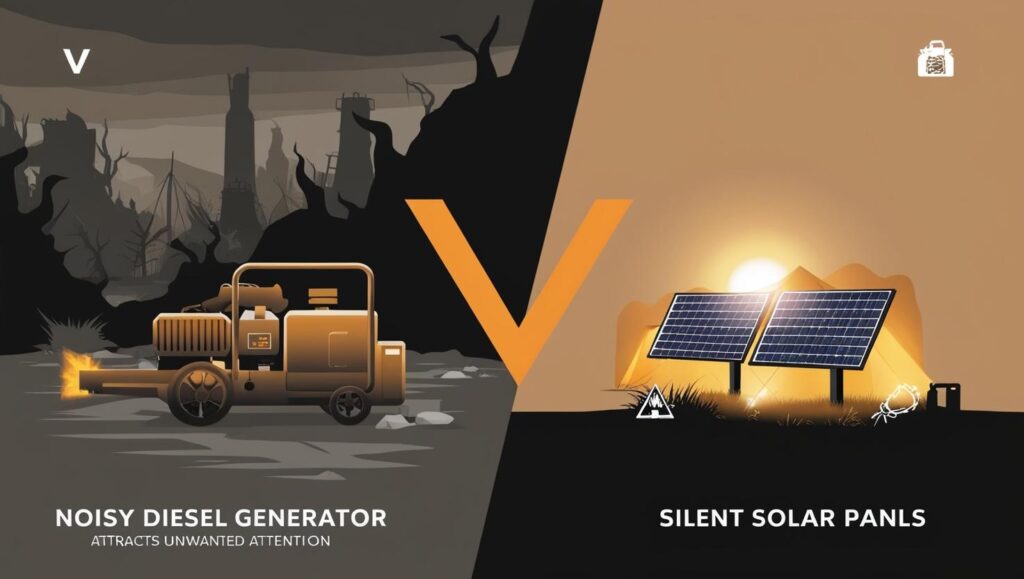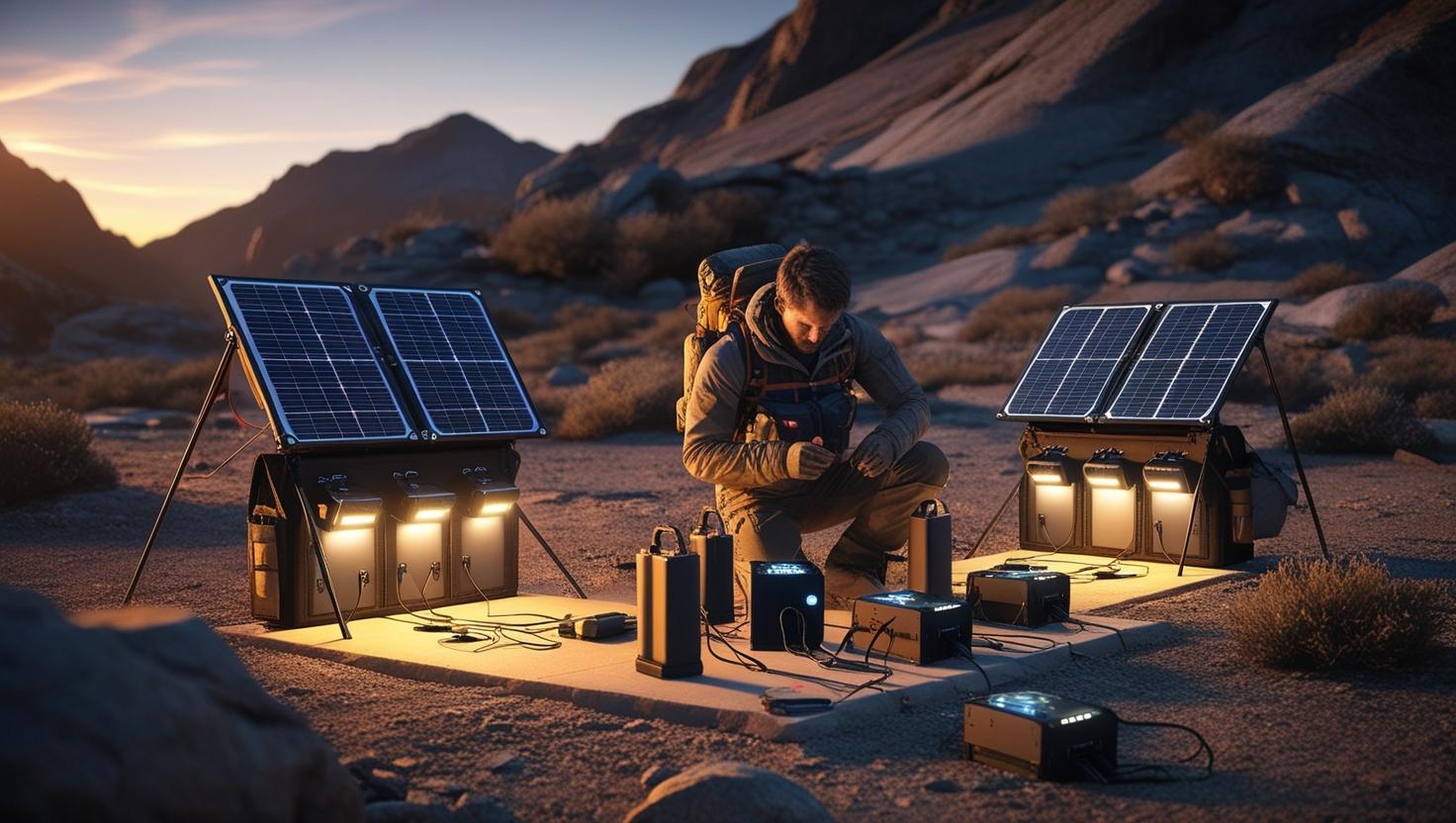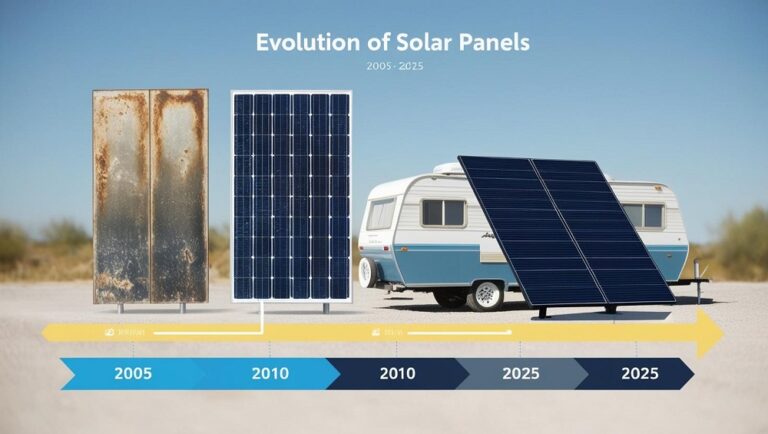The Ultimate Test of Solar Reliability
Picture this: A Category 4 hurricane just ravaged your coastal town. The power grid is down—possibly for weeks. Grocery stores are closed, gas stations have mile-long lines, and your phone battery is at 12%.
In moments like these, your energy source becomes a lifeline.
Solar power has come a long way from being just an eco-friendly alternative. Today, it’s a legitimate survival tool—used by preppers, RVers, and disaster-response teams worldwide. But the big question remains:
Can you really trust solar when your life depends on it?
Let’s cut through the hype and examine the facts, failures, and fixes of solar in emergencies.
(For context on solar’s evolution, see: Solar’s RV Big Break.)
Why Solar Should Be Your Emergency Power Backup
1. No Fuel = No Panic
- Gas generators fail when fuel runs out (and in crises, gas disappears fast).
- Solar runs on sunlight—an infinitely renewable resource (as long as the sun exists, you have power potential).
- Tropic Advantage: Tropical zones get 4-6 peak sun hours daily—enough to keep critical devices running.
2. Silent & Stealthy Operation
- Generators roar, drawing unwanted attention in volatile situations.
- Solar panels work silently, ideal for bug-out locations or urban blackouts.
3. Modern Tech is Rugged & Reliable
- Early solar panels were fragile—today’s are military-grade tough.
- (Compare durability: 2005 vs. 2024 RV Solar Panels.)
- Waterproof, hail-resistant, and corrosion-proof models exist (critical for tropical storms).
4. Scalable for Any Crisis
- Basic: 50W panel + power bank (phones, LED lights).
- Advanced: 400W system + battery (fridge, medical devices, comms).
- (For gear specifics, see: Solar Power for Survivalists.)
Solar vs. Generator: The Ultimate Emergency Showdown

Round 1: Stealth Survival
☀️ Solar: Silent as moonlight. Powers your refuge without announcing it to desperate neighbors.
🔊 Generator: Like running a Harley-Davidson in your living room. Attracts attention when you need it least.
Round 2: Fuel Anxiety
☀️ Solar: Sun charges your batteries even during grocery store riots.
⛽ Generator: Becomes a $1,200 paperweight when gas stations dry up (usually within 12 hours of disaster).
Round 3: Maintenance Under Fire
☀️ Solar: Zero moving parts. Just wipe off debris and it works.
🔧 Generator: Requires clean filters, fresh oil, and prayers to the carburetor gods.
Round 4: Tropical Toughness
☀️ Solar: Waterproof panels laugh at monsoons (when properly angled).
🌧️ Generator: Flooded engines = dead engines. Humidity corrodes components in weeks.
Round 5: Long-Term Game
☀️ Solar: 25-year lifespan. Your grandchildren might inherit these panels.
⏳ Generator: Best-case scenario? 3,000 hours before major overhaul.
“But What If…?” – Addressing Solar’s Biggest Doubts
❓ “What if it’s cloudy for days?”
- Solution:
- Oversize your battery bank (3+ days of storage).
- Pair with hand-crank backups for essential electronics.
- Tropic Tip: Even on cloudy days, solar panels still generate 10-25% of their rated power.
❓ “Isn’t solar complicated to set up in a crisis?”
- Solution:
- Plug-and-play solar generators (e.g., Jackery, Bluetti) require zero expertise.
- Pre-wire your bug-out vehicle/RV for solar (Learn from RVers).
❓ “Will humidity and storms wreck my gear?”
- Solution:
- Use marine-grade connectors (salt-air resistant).
- Store batteries in waterproof cases (monsoon-proofing).
Real-World Proof: Solar Saves Lives in Disasters
Case Study 1: Puerto Rico After Hurricane María (2017)
- The grid was destroyed—some areas had no power for 11 months.
- Solar microgrids and home systems kept hospitals, water pumps, and comms running.
- (Source: Nature Energy Study)
Case Study 2: RVers in California Wildfires
- With roads closed and gas scarce, solar-powered RVs became lifesaving shelters.
- Families ran CPAP machines, fridges, and phones indefinitely.
How to Make Solar Fail-Proof for Emergencies
1. Test Before Disaster Strikes
- Run a 48-hour solar-only drill at home.
- Identify weak points (e.g., battery drain, panel positioning).
2. Redundancy is Key
- Pack spare connectors, fuses, and a backup panel.
- (RVers know this well—read their fixes.)
3. Tropical-Proof Your Setup
- Monsoon-Proofing:
- Angle panels to shed rain faster.
- Use silica gel packs in battery compartments to fight humidity.

When Solar Might Fail (And How to Compensate)
Solar isn’t magic—it has limits:
- Weeks of heavy clouds (Arctic winters, extreme monsoons).
- Backup: Hand-crank radio, propane heater.
- Physical damage (falling debris, theft).
- Backup: Portable panels you can hide.
The verdict? Solar is the best primary power source for emergencies—but smart preppers always have a Plan B.
Final Verdict: Trust, But Verify
Solar power has earned its place in emergency preparedness. With modern tech, smart planning, and real-world proof, it’s no longer a question of if solar works—but how well you’ve prepared.
Your Next Steps:
- Start small (solar phone charger).
- Stress-test your system.
- Scale up as needed.
For deeper dives:
- FEMA’s Emergency Power Guide
- NOAA Solar Irradiance Maps (check your zone’s sun potential)
- Explore our RV Solar Hub for mobile power tips

